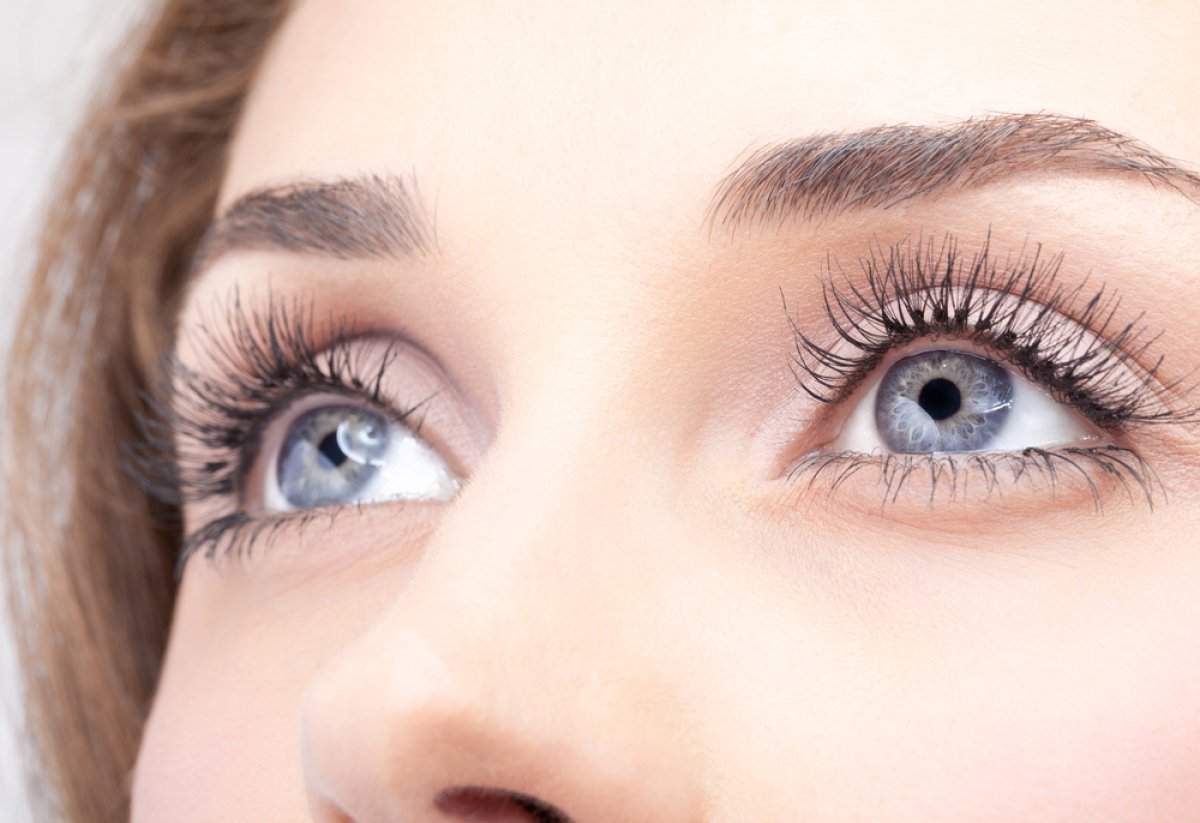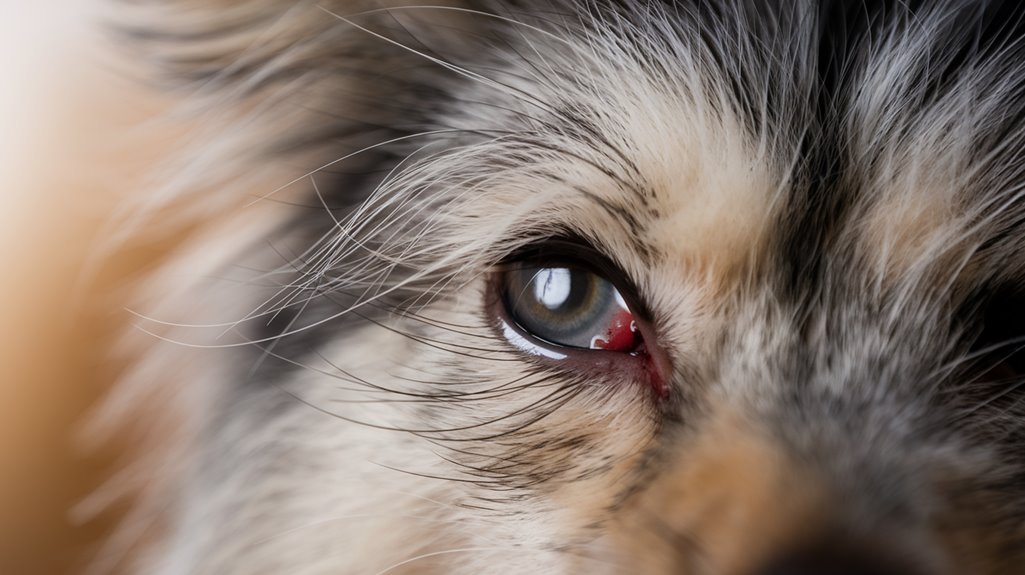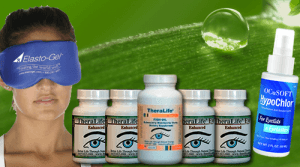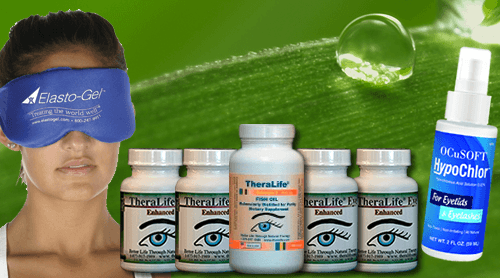Your dog or cat can indeed suffer from blepharitis, marked by inflamed eyelids causing redness and swelling. It often results from allergens or irritants, affecting breeds like Cocker Spaniels or Himalayans more due to their anatomy. For pet owners seeking effective solutions, TheraLife’s products offer significant benefits. TheraLife focuses on natural treatments to alleviate symptoms associated with blepharitis, dry eyes, and other eye conditions. Their products aim to enhance overall eye health by reducing inflammation and promoting natural healing processes.
TheraLife emphasizes an integrative approach, combining internal and external treatments to offer relief. Their products are particularly beneficial for managing chronic conditions and preventing recurrences. Additionally, TheraLife provides guidance on maintaining proper eyelid hygiene and lifestyle adjustments to support eye health.
With resources detailing how to treat conditions like blepharitis and uveitis naturally, TheraLife empowers pet owners with knowledge and effective strategies. Their offerings cater to those seeking alternatives to traditional antibiotics or surgeries, thereby aligning with the growing preference for holistic pet care.
Best Blepharitis Treatment From TheraLife
Add To Cartrstanding and control of this persistent condition.
Key Takeaways
- Blepharitis is common in both dogs and cats, characterized by inflammation, redness, and crusting of the eyelids.
- Certain breeds, such as Cocker Spaniels and Persian cats, are more susceptible to blepharitis.
- Environmental factors like pollen, dust, and smoke can trigger blepharitis in pets.
- Proper eyelid hygiene and regular veterinary check-ups are key in preventing and managing blepharitis.
- Early detection and prompt veterinary intervention can prevent complications and ensure effective treatment for blepharitis.
Recognizing the Signs of Blepharitis in Pets
How can you tell if your pet has blepharitis? Look for signs like redness, swelling, and crusting around the eyelids, which indicate inflammation. Pets may also show increased blinking or rubbing of their eyes due to discomfort. Effective symptom management begins with diligent eye hygiene. Cleanse your pet’s eyes gently with a sterile, damp cloth to remove debris and reduce irritation. This helps prevent secondary infections. Monitoring your pet’s eye hygiene is essential, as maintaining cleanliness can alleviate symptoms and support healing. If symptoms persist, consult a veterinarian for further evaluation. They might recommend medicated ointments or drops to reduce inflammation and manage infection. Timely intervention is key to preventing complications and preserving your pet’s eye health. Consistent eye care can help manage symptoms similar to chronic eyelid inflammation found in humans, ensuring your pet remains comfortable and healthy.
Common Causes of Blepharitis in Dogs and Cats
Understanding why your pet develops blepharitis is just as important as recognizing its symptoms. This eyelid inflammation in dogs and cats often stems from a combination of environmental factors and allergic reactions. Exposure to irritants such as pollen, dust, or smoke can trigger blepharitis, particularly in pets with a predisposition to allergies. Allergic reactions can lead to the overproduction of certain immune responses, causing inflammation. Additionally, environmental allergens may exacerbate underlying skin conditions, thereby contributing to blepharitis. Bacterial or fungal infections are also common causes, as they can invade the compromised skin barrier of the eyelids. Regular eyelid hygiene is crucial in both preventing and managing blepharitis to reduce the risk of irritation and infection. Effective management involves identifying and minimizing these triggers through environmental control and tailored veterinary care, ensuring your pet’s comfort and health.
Breeds Prone to Developing Blepharitis
When considering blepharitis in pets, it’s essential to recognize that certain breeds exhibit a higher predisposition due to genetic factors and anatomical features. For dogs, breeds like Cocker Spaniels and Bulldogs often experience this condition, likely because of their prominent facial folds and eyelid conformation. In cats, Persian and Himalayan breeds are particularly susceptible, as their brachycephalic structure can contribute to tear film instability and eyelid abnormalities, increasing the risk of inflammation. Regular eyelid hygiene is crucial in managing blepharitis symptoms in pets and preventing recurrence.
Commonly Affected Dog Breeds
Although blepharitis can affect any breed, certain dog breeds are more predisposed due to their unique anatomical features and genetic factors. Breeds with prominent facial folds or long hair around the eyes, like Bulldogs and Shih Tzus, are particularly vulnerable. Their breeds’ characteristics necessitate meticulous grooming habits to prevent debris accumulation and irritation. Regular cleaning and trimming around the eyes can mitigate inflammation risks. Untreated blepharitis in pets, much like in humans, can lead to chronic discomfort and further complications if not addressed promptly. Here’s a summary table highlighting the susceptibility based on key factors:
| Breed | Characteristics | Grooming Needs |
|---|---|---|
| Bulldogs | Facial folds | Regular cleaning |
| Shih Tzus | Long hair around eyes | Frequent trimming |
| Poodles | Dense, curly coat | Routine grooming |
Focusing on these breeds’ care protocols can help manage and prevent blepharitis symptoms, ensuring your dog’s ocular health remains ideal.
Susceptible Cat Breeds
Just as certain dog breeds are more vulnerable to blepharitis, specific cat breeds also face heightened risks due to their unique anatomical and genetic traits.
These breeds exhibit distinct characteristics that can predispose them to common symptoms like eyelid inflammation, redness, and discharge.
- Persians: Their flat facial structure can lead to tear drainage issues, increasing blepharitis susceptibility.
- Himalayans: Similar to Persians, they often have tear duct abnormalities, exacerbating ocular conditions.
- Burmese: Known for their genetic predisposition to skin conditions, which may trigger blepharitis.
- British Shorthairs: Their dense fur can harbor allergens or debris, causing irritation.
Blepharitis, a common eye condition, can result from clogged oil glands in both pets and humans, which is a frequent contributing factor.
Treatment options for these breeds include regular eyelid cleaning, topical antibiotics, and corticosteroids, contingent upon veterinary consultation.
Understanding these predispositions aids in early detection and management, ensuring your cat’s ocular health.
Diagnosing Blepharitis: What to Expect
When diagnosing blepharitis in pets, you’ll first notice signs like redness, swelling, and crusting around the eyes. During the veterinary examination, expect the vet to perform a detailed ocular assessment, possibly using tools like a slit lamp or fluorescein stain to evaluate the eye’s surface and detect any corneal abrasions. The vet may also take skin scrapings or cultures to identify underlying infections or allergens contributing to the condition. It’s important to maintain proper eyelid hygiene in pets to prevent exacerbation of symptoms and aid in the management of blepharitis.
Signs and Symptoms
Blepharitis, an inflammation of the eyelids, presents with distinct signs and symptoms that are vital for diagnosing the condition in pets. You’ll notice your pet showing discomfort and irritation around the eyes.
Here are key indicators to watch for:
- Redness and Swelling: The eyelids may appear red and swollen due to inflammation.
- Discharge: A sticky, sometimes crusty discharge might form, adhering to the eyelids and surrounding fur.
- Excessive Blinking or Squinting: Your pet might blink frequently or keep their eyes partially closed.
- Itching or Rubbing: Pets may rub their eyes persistently, indicating irritation.
Maintaining proper eye hygiene is essential for blepharitis prevention. Regularly cleaning your pet’s eyes can help minimize symptoms and reduce the risk of recurrence. Inflammatory cytokines such as IL-1beta and TNF-alpha play a significant role in the inflammatory processes associated with blepharitis, highlighting the importance of understanding the underlying mechanisms for effective management.
Veterinary Examination Process
During a veterinary examination for blepharitis, expect a detailed process to guarantee accurate diagnosis and treatment planning.
Your veterinarian will begin with a thorough veterinary assessment, noting any clinical signs such as redness, swelling, or discharge around your pet’s eyes. They’ll ask about your pet’s medical history, including any prior eye conditions or irritations.
Diagnostic tools commonly used include a slit lamp examination to closely inspect the eyelids and ocular surface. Additionally, fluorescein staining may be employed to detect corneal ulcers or abrasions.
Cytology, involving the collection of skin cells from the eyelids, can help identify bacterial or fungal infections. Blood tests and allergy screenings may also be recommended to rule out systemic causes and provide a holistic evaluation.
In some cases, corneal ulcers may be present, characterized by thick discharge and requiring immediate medical intervention.
Best Blepharitis Treatment From TheraLife
Add To Cartrstanding and control of this persistent condition.
At-Home Care Tips for Managing Blepharitis
Although managing blepharitis in pets can be challenging, implementing effective at-home care strategies is crucial to alleviate symptoms and improve your pet’s comfort.
Maintaining proper eye hygiene and employing home remedies can greatly reduce irritation and inflammation. Here are four evidence-based tips:
- Cleanse Gently: Use a warm, damp cloth to gently wipe away crusts and discharge from your pet’s eyelids. This promotes eye hygiene and reduces bacterial load.
- Apply Warm Compresses: Place a warm compress on the affected eye for 5-10 minutes to soothe inflammation and improve glandular function.
- Use Lubricating Drops: Administer vet-approved lubricating eye drops to maintain moisture and prevent further irritation.
- Monitor Diet: Confirm a balanced diet rich in omega-3 fatty acids, which may enhance tear film stability and reduce inflammation.
Proper eye care is essential to prevent complications, as conditions like Meibomian Gland Dysfunction can exacerbate symptoms if left untreated.
Veterinary Treatment Options for Blepharitis
When your pet’s blepharitis doesn’t improve with at-home care, it’s essential to explore veterinary treatment options to effectively manage the condition. Veterinary interventions often start with topical medications, which are applied directly to the eyelids to reduce inflammation and combat infections. These may include antibiotic ointments or corticosteroid drops, targeting bacterial invaders and soothing inflamed tissues. If your pet’s blepharitis stems from underlying conditions like meibomian gland dysfunction, surgical options might be necessary. Surgery can involve removing blockages or correcting anatomical abnormalities contributing to chronic irritation. Understanding and symptoms of blepharitis are important for identifying and managing the condition effectively. Your veterinarian will conduct a thorough examination to determine the most effective treatment plan, ensuring that your pet receives tailored care to alleviate symptoms and prevent recurrence. Always follow your vet’s guidance for ideal results.
Preventative Measures to Protect Your Pet’s Eyes
To safeguard your pet’s eyes from blepharitis, it’s essential to schedule regular veterinary eye check-ups, which can detect early signs of irritation or infection.
Maintaining a clean eye environment by regularly removing debris and using vet-approved eye cleansers helps reduce the risk of bacterial contamination.
Additionally, providing nutritional eye support through a balanced diet rich in omega-3 fatty acids and antioxidants can enhance ocular health and fortify your pet’s immune response against potential infections.
Regular Eye Check-Ups
Guaranteeing your pet receives regular eye check-ups is an essential preventative measure to safeguard their ocular health.
Regular veterinary visits help in the early detection of conditions like blepharitis. The importance of eye hygiene and monitoring eye health can’t be overstated.
Here’s why these check-ups matter:
- Early Detection: Regular exams can reveal early signs of ocular diseases, preventing complications.
- Professional Cleaning: Vets provide thorough cleaning to remove debris, reducing infection risks.
- Eye Health Monitoring: Routine assessments track changes in eye condition, allowing for timely interventions.
- Tailored Recommendations: Veterinarians offer advice on maintaining ideal eye hygiene specific to your pet’s needs.
Prioritizing these check-ups guarantees proactive care, reducing the likelihood of severe eye problems in your pets.
Clean Eye Environment
Creating a clean eye environment is essential in preventing eye issues like blepharitis in pets. To maintain ocular health, implement regular cleaning routines using sterile eyewash solutions specifically designed for pets.
These solutions help remove debris and allergens that can accumulate around your pet’s eyes, reducing irritation and inflammation. Use a clean, soft cloth or gauze to gently wipe the eye area, ensuring you don’t apply excessive pressure.
Consistent cleaning mitigates the risk of bacterial infections, which are a common cause of blepharitis. Additionally, keep your pet’s living area free from dust and other irritants by vacuuming and dusting frequently.
Monitoring and controlling potential environmental triggers can effectively support your pet’s ocular health and prevent uncomfortable eye conditions.
Nutritional Eye Support
Alongside maintaining a clean eye environment, you should focus on nutritional support to protect your pet’s eyes from conditions like blepharitis.
Guaranteeing ideal eye health involves specific dietary strategies. Consider incorporating these elements into your pet’s regimen:
- Omega-3 Fatty Acids: Essential for reducing inflammation, these fatty acids support overall eye health and can be found in fish oil dietary supplements.
- Antioxidants: Vitamins C and E are critical in mitigating oxidative stress in the eyes, potentially lowering the risk of inflammatory conditions.
- Lutein and Zeaxanthin: These carotenoids are essential for maintaining retinal health and can be found in leafy greens and commercial pet supplements.
- Taurine: Especially essential for cats, taurine guarantees proper retinal function and can be supplemented if dietary intake is insufficient.
These strategies bolster ocular health, enhancing longevity and quality of life.
Understanding the Complications of Untreated Blepharitis
Neglecting blepharitis in pets can lead to a cascade of complications that affect their overall ocular health.
A complications overview reveals that chronic inflammation can cause conjunctivitis, keratitis, and even corneal ulcers. These secondary infections result from the initial irritation and inflammation of the eyelids, leading to discomfort and potential vision impairment.
Long term effects may include scarring of the eyelid tissues, which can disrupt normal eyelid function and tear film distribution. This can exacerbate dryness and irritation, perpetuating a cycle of discomfort and inflammation.
Additionally, untreated blepharitis can lead to meibomian gland dysfunction, which further impacts tear quality and quantity.
Proper management is essential to prevent these complications and maintain your pet’s eye health over time.
Natural Remedies and Alternative Treatments
When considering natural remedies and alternative treatments for blepharitis in pets, it’s crucial to rely on evidence-based approaches to guarantee safety and efficacy.
While conventional treatments are often necessary, some pet owners explore supplementary options. Homeopathic treatments and herbal solutions can offer relief, but only when used correctly.
Here are several strategies you might consider:
- Chamomile Compresses: Chamomile’s anti-inflammatory properties may soothe irritated eyelids. Use cooled chamomile tea bags as compresses on your pet’s eyes.
- Aloe Vera Gel: Apply a small amount of pure aloe vera gel to reduce inflammation and provide a cooling effect.
- Homeopathic Eyedrops: Seek veterinary guidance for these, as formulations vary.
- Dietary Supplements: Omega-3 fatty acids may support overall eye health, reducing inflammation.
Always consult your veterinarian before starting any new treatment.
When to Consult a Veterinary Ophthalmologist
How do you know when it’s time to consult a veterinary ophthalmologist for your pet’s blepharitis? If you’re noticing persistent symptoms despite standard treatments, it’s essential to seek a specialist consultation. An ophthalmologist can diagnose underlying issues, such as meibomian gland dysfunction or bacterial infections, that may not be visible to the general practitioner. Additionally, if your pet exhibits pain, excessive tearing, or vision changes, these are indicators to consult a specialist.
| Symptom | General Vet Treatment | Specialist Consultation Needed |
|---|---|---|
| Persistent redness | Topical antibiotics | Yes, if unresolved |
| Swelling or discharge | Warm compresses | Yes, if persistent |
| Vision changes | Initial assessment | Yes, immediate consultation |
| Pain or discomfort | Pain management | Yes, if ongoing |
Prompt attention guarantees proper care.
Best Blepharitis Treatment From TheraLife
Add To Cartrstanding and control of this persistent condition.
Frequently Asked Questions
Can Blepharitis in Pets Be Contagious to Humans or Other Animals?
You’re wondering if blepharitis in pets is contagious to humans or other animals.
Blepharitis itself isn’t directly contagious. However, understanding transmission methods is essential. If blepharitis is caused by bacterial or parasitic infections, there’s a human risk if these pathogens are zoonotic.
Evidence-based studies show that direct contact with infected secretions might spread bacteria, but it’s rare.
Always practice good hygiene to minimize any potential risk and consult your vet for specifics.
How Long Does It Typically Take for Blepharitis Symptoms to Improve in Pets?
Rome wasn’t built in a day, and neither is recovery from blepharitis.
Typically, symptom duration in pets can vary, but with proper treatment, you might see improvement in about two to four weeks.
The treatment timeline often includes topical antibiotics or anti-inflammatory medications.
Consistency in applying these treatments is essential.
Evidence-based studies suggest that patience and adherence to prescribed care greatly enhance recovery, ensuring your pet’s comfort and health.
Is Blepharitis in Pets More Common in Certain Climates or Seasons?
You might wonder if climate effects or seasonal variations impact blepharitis in pets.
Indeed, warmer, humid climates can exacerbate skin conditions due to increased moisture, fostering bacterial growth. Conversely, dry conditions might lead to irritation, triggering inflammation.
Seasonal changes can also affect allergens, causing flare-ups. Evidence suggests that monitoring environmental factors and adjusting pet care routines accordingly can help manage symptoms, highlighting the importance of understanding your pet’s specific environmental needs.
What Should I Feed My Pet to Support Eye Health and Prevent Blepharitis?
Isn’t it crucial to feed your pet a nutrient-rich diet for ideal eye health?
Incorporate omega fatty acids, as they’re important for reducing inflammation and promoting overall eye wellness. Foods like fish oil, flaxseeds, and leafy greens can provide these significant nutrients.
Research shows that omega-3s may decrease the risk of eye disorders.
Make certain your pet’s diet is balanced, including antioxidants and vitamins like E and C, to support their vision and prevent conditions like blepharitis.
Are There Any Specific Grooming Practices That Can Help Prevent Blepharitis in Pets?
To prevent blepharitis, implement grooming techniques focusing on eye hygiene.
Regularly clean your pet’s eyes using a damp, lint-free cloth to remove debris and discharge. Trim hair around the eyes to prevent irritation and bacterial buildup. Use veterinarian-recommended eye wipes for additional cleanliness.
Confirm your pet’s grooming tools are clean to avoid cross-contamination. Evidence shows maintaining eye hygiene reduces blepharitis risk by minimizing irritants and bacteria near the eyes.
Best Blepharitis Treatment From TheraLife
Add To Cartrstanding and control of this persistent condition.
Conclusion
In the ongoing battle against blepharitis in your beloved pet, consider the benefits of TheraLife’s comprehensive approach to ocular health. TheraLife’s products offer a strategic combination of at-home care, preventative measures, and natural remedies that create a formidable defense against complications. With a focus on holistic treatment, TheraLife provides options that support both you and your pet in maintaining optimal eye health.
TheraLife’s solutions are crafted to soothe and prevent blepharitis, drawing from their expertise in treating dry eyes, managing symptoms of Sjogren’s syndrome, and even addressing issues like uveitis. They emphasize the importance of understanding the triggers and environmental factors that contribute to eye conditions, offering insights into the best and worst places to live if you suffer from dry eyes.
Furthermore, TheraLife provides guidance on maintaining eye health through dietary recommendations and eye care practices, such as using appropriate make-up products to avoid exacerbating symptoms. They also offer products specifically designed for those with sensitive eyes or conditions like rosacea.
In situations where professional expertise is needed, TheraLife encourages consulting with a veterinary ophthalmologist to ensure comprehensive care for your pet. Their commitment to ocular health makes TheraLife a valuable ally in your pursuit of victory over blepharitis for both you and your pet.





